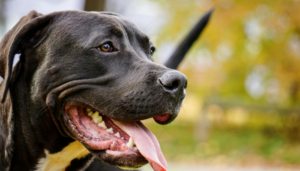
We’ve all experienced it – taking our dogs outside for what seems to be an easy jaunt only to watch them remain stationary for an indeterminate amount of time before eventually going potty. While this may be frustrating for us humans, there’s usually an excellent explanation as to why dogs take so long pooping. Here’s why dogs take longer.
Why Do Dogs Take So Long to Poop? Unfortunately, like so much else in life there’s no simple explanation as to why dogs take such a long time to poop.
Reasons behind dogs taking longer to defecate may include smell, social signals and aligning themselves with magnetic fields. From responding to social cues from other dogs or aligning themselves with Earth’s magnetic field patterns – dogs have several good reasons for taking their time when searching for that ideal spot to defecate.
Your Dog Has Their Own Internal Poop Compass At first, it may seem incomprehensible why magnetic fields and dog poop would have anything in common, but dogs actually use an internal compass when going to the bathroom and this research indicates they do so according to Earth’s magnetic field.
Researcher who have investigated how and where dogs defecate have found that dogs appear to strive to align themselves on a north-south axis when defecating, suggesting that magnetic sense may play a part in this decision. Furthermore, researchers believe spinning around before they squat may also help align themselves with Earth’s magnetic field.
As strange as it seems, this phenomenon isn’t unique to dogs; cattle & foxes also tend to line up along Earth’s magnetic field lines when defecating.
Scent Marking & Social Cues Are Key
When it comes to why dogs take so long to use the bathroom, don’t discount the role that scent marking plays in this decision-making. Scent marking is an instinctual behavior where dogs deposit urine or feces to make a statement and leave information behind as they eliminate. When dogs eliminate, they’re doing more than simply relieving themselves; their elimination also leaves valuable clues as to who lives nearby and their needs for relief.
Remarks by Dr. Daniel Rappaport for The Atlantic are that scent marking is an instinctual behavior found among both wolves and domesticated dogs, leaving scent marks around their territory as a warning signal for others not to enter, which also occur during territorial marking. Although territorial marking is the most widely recognized form of scent creating behavior, other forms may exist too – there may even be others such as trail making!
“Pee mail” is what our dogs leave behind when they defecate on the ground, leaving messages about how many dogs are nearby, their friendliness or lack thereof and any sexual status changes such as whether a female dog is in heat. Other dogs’ social cues can influence when and where your pet goes to use the bathroom; sometimes just sniffing another canine can trigger urges to defecate.
Every Dog Is an Individual
While we may know why it takes so long for dogs to poop, it’s important to keep in mind that each canine is an individual with its own quirks and preferences when it comes to finding an acceptable spot to squat; some canines may take more effort while others appear to manage just fine without issue.
If your dog takes an extended amount of time going potty and you want to speed things up, return to basics by reinforcing a potty command (make sure that praise and consistency are used consistently).
Remember, if it takes your dog a while to decide where they need to poop, don’t get angry – they are not acting against you; there may well be scientific explanations behind their delay.





